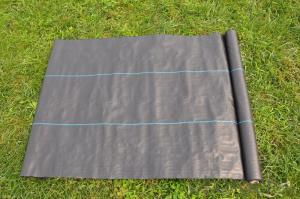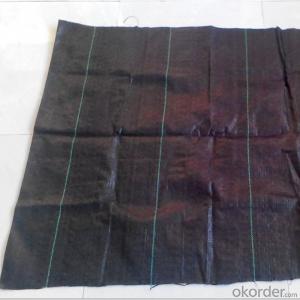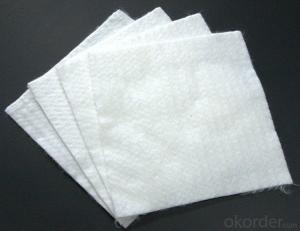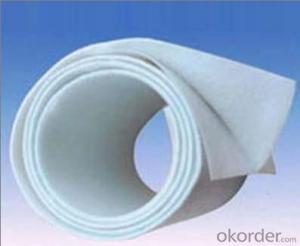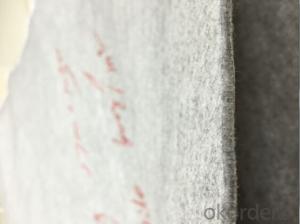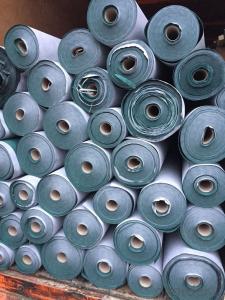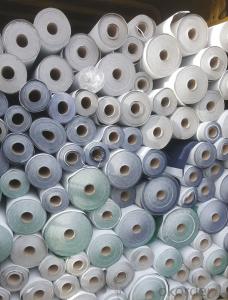Rrecycled Material PP Woven Weed Control Mat, PP Woven Weed Barrier Fabric
- Loading Port:
- Qingdao
- Payment Terms:
- TT or LC
- Min Order Qty:
- 10000 m²
- Supply Capability:
- 500000 m²/month
OKorder Service Pledge
OKorder Financial Service
You Might Also Like
Product Description
The weed control mat is made of environmentally friendly raw materials, pp woven fabric. It used to prevent the growth of weed,
without the use of potentially dangerous chemical sprays or labor intensive hoeing. Once installed, weed mat will continue providing
protection for years without maintenance.
They are permeable fabrics, which allow air, water and nutrients to pass through, and designed to block out the sun to reduce
photosynthesis and stop weed growth.
Specification
Item | Ground Cover / Weed Control Mat |
Material | 100% Polypropylene,with or without uv |
Aniti-UV Rate | can be customized(1%---4%) |
Width | 600 mm ~2400mm (max 2.4m, can be cut into any size) |
Length | 50M, 100M, 200M, as per request |
Weight | 90gsm ~ 100gsm, as per request |
Mesh Type | Square & sesame |
Color | Black, as per request |
Roll Diameter | 1.1 meter |
Loading Qty. | 5-6 Tons Per 20' fFT Pack in rolls with card tube in center and be wraped in PE or as customer need. |
Delivery | 15-20 Day Per 20' GP |
Features
1. Weed suppressant and drainage control landscaping fabric
2. Easy to use, Environmentally friendly
3. Allows water, air and nutrients through, suppressing weeds without the use of chemicals
4. Reduces the level of watering required due to the slower rate of water evaporation
Application
1. Excellent Weed Control
2. Moisture, fertilizers, air reach plants to allow for healthy soil
3. Good water and air permeability
4. Exceptional toughness and strength
5. Durable, tear-resistant; won't rot or mildew
6. Lightweight, easy to install, follows natural ground contours
7. Ideal for use in landscaped beds, under decks and walkways.
Packaging & Delivery
| Packaging Details: | Packed In Roll Or In Bales Or Cartons Or According To Customers Requirement |
| Delivery Detail: | 20 Days After Order Confirmed |
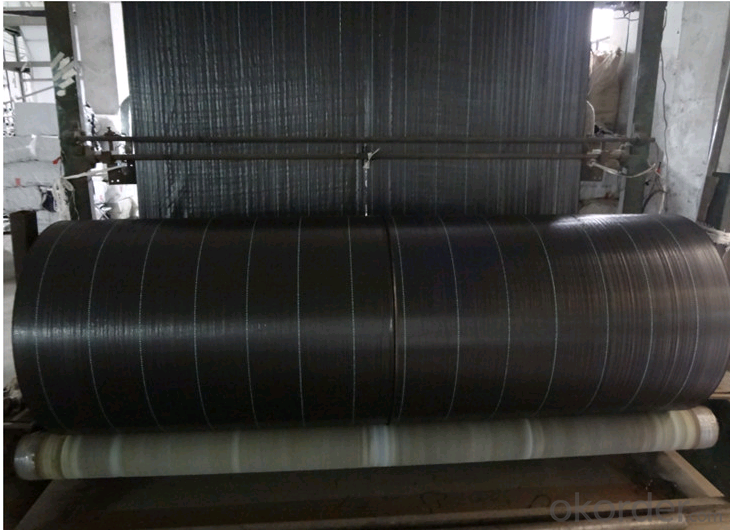
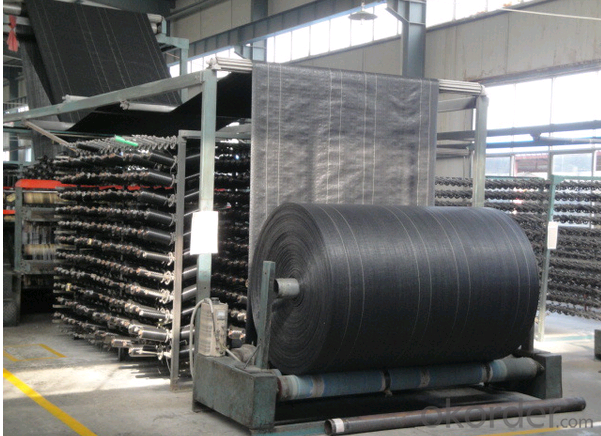
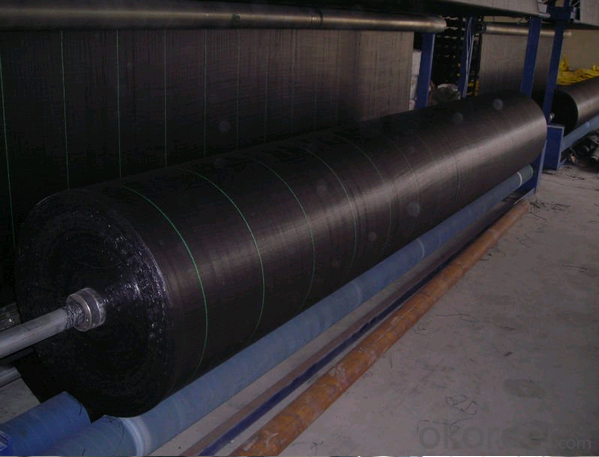

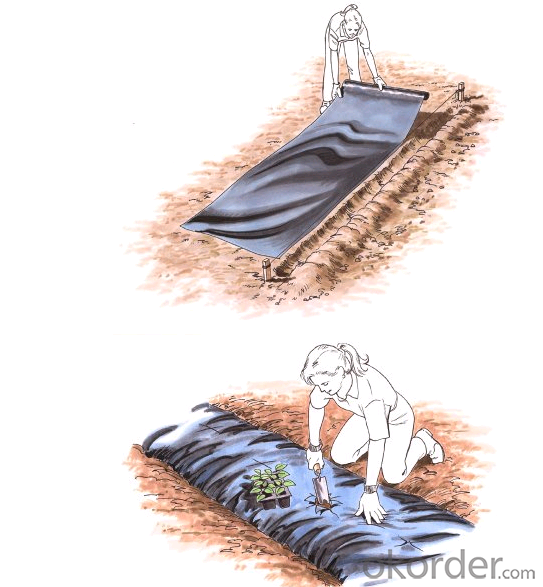
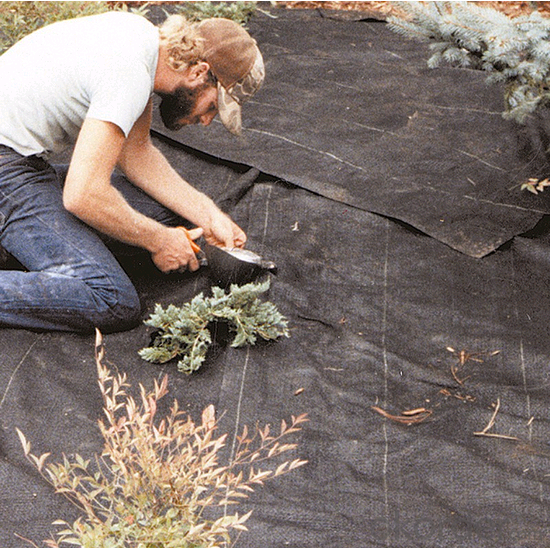
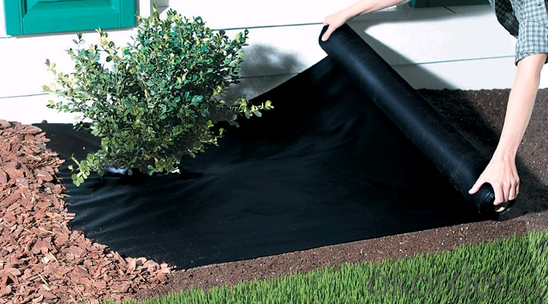
- Q:Geotextile 0.2 and 1.0 which is more sunscreen
- 1.0 more sunscreen
- Q:Is there a coinage between the embedded pipeline and the gravel blind ditch? Also on the backfill plant how to set the quota? Also ask the master advise! More
- You can go to the civil online forum to ask questions, there are a little more professional.
- Q:What is the difference between nonwovens and geotextiles? What is the difference between geotextiles and nonwovens?
- Geotextile is divided into two non-woven geotextile and woven geotextile, non-woven geotextile and acupuncture and spunlace, staple fiber and long fiber. Nonwovens means that the manufacturing process does not require weaving. Geotextiles are used for geotechnical engineering. Geotextile is part of the textile does not require the manufacture can be made, called non-woven geotextile. Non-woven fabrics can be used very broad, like we use the heart of the soft wipes, are non-woven, as well as the hotel put the shoes of the shoes, but also non-woven.
- Q:How do geotextiles help with erosion control in riverbanks?
- Geotextiles help with erosion control in riverbanks by acting as a barrier and stabilizing the soil. They prevent the soil particles from being washed away by the flowing water, while still allowing water to pass through. This helps to reduce the velocity of the water, minimizing the impact of erosive forces and protecting the riverbank from further degradation.
- Q:Can geotextiles be used for reinforcement of earthen dams?
- Yes, geotextiles can be used for the reinforcement of earthen dams. Geotextiles are commonly used in dam construction projects to provide stability, erosion control, and increase the overall strength of the dam structure. They can be used as a reinforcement material to improve the performance and longevity of earthen dams by enhancing their ability to withstand water pressure, reduce seepage, and prevent soil erosion. Geotextiles offer a cost-effective and environmentally friendly solution for reinforcing earthen dams.
- Q:How do geotextiles help with erosion control in river channels?
- Geotextiles help with erosion control in river channels by providing a physical barrier that stabilizes the soil and prevents it from being washed away by flowing water. They also promote vegetation growth by allowing water to permeate while filtering out sediment, ultimately protecting the riverbanks from erosion.
- Q:What are the specifications for geotextiles in roadways?
- The specifications for geotextiles in roadways usually include factors such as tensile strength, puncture resistance, filtration properties, and durability. Geotextiles used in roadways should have a high tensile strength to withstand the stress and strain exerted by traffic and construction activities. They should also have good puncture resistance to prevent damage from sharp objects. The filtration properties of geotextiles are important for preventing the migration of fine particles and maintaining the stability of the road structure. Additionally, geotextiles should be durable and resistant to degradation caused by UV exposure, chemicals, and biological factors.
- Q:What are the different manufacturing methods for geotextiles?
- There are several different manufacturing methods for geotextiles, including weaving, knitting, and nonwoven techniques. Weaving involves interlacing yarns to create a fabric, while knitting uses a series of loops to form the fabric. Nonwoven methods involve bonding fibers together using heat, chemicals, or mechanical processes. Each method has its own advantages and is selected based on the desired properties and applications of the geotextile.
- Q:Can geotextiles be used in slope stabilization projects?
- Yes, geotextiles can be used in slope stabilization projects. They are commonly used to reinforce and strengthen slopes by providing soil stability, erosion control, and drainage. Geotextiles can effectively distribute loads, prevent soil movement, and increase the overall stability of slopes, making them a valuable tool in slope stabilization projects.
- Q:Differences between staple acupuncture nonwoven geotextile and filament spunbonded nonwoven geotextile
- Appearance of different shapes: staple acupuncture non-woven geotextile in the appearance of the surface of the fiber is shorter, and filament spunbond acupuncture non-woven geotextile surface fiber longer. Different materials: staple acupuncture non-woven geotextile with PET polyester staple fiber acupuncture, and filament spunbond acupuncture non-woven geotextile made of polyester chips. Production equipment and different technology: staple acupuncture non-woven geotextile is the polyester staple fiber through the mixing - clutter - comb - shop - acupuncture, and filament spunbond acupuncture non-woven geotextile is the polyester Sliced hot melt - spinning - carding - shop - acupuncture. Implementation of different standards: staple acupuncture non-woven geotextile implementation of GB / T-2008 standards, and filament spunbond acupuncture non-woven geotextile implementation of GB / T-2008 standard. The same specifications of filament spunbonded acupuncture non-woven geotextile quality is better than staple acupuncture non-woven geotextile. Price: the same specifications of polyester staple acupuncture non-woven geotextile price is lower than filament spunbond acupuncture non-woven geotextile.
1. Manufacturer Overview |
|
|---|---|
| Location | |
| Year Established | |
| Annual Output Value | |
| Main Markets | |
| Company Certifications | |
2. Manufacturer Certificates |
|
|---|---|
| a) Certification Name | |
| Range | |
| Reference | |
| Validity Period | |
3. Manufacturer Capability |
|
|---|---|
| a)Trade Capacity | |
| Nearest Port | |
| Export Percentage | |
| No.of Employees in Trade Department | |
| Language Spoken: | |
| b)Factory Information | |
| Factory Size: | |
| No. of Production Lines | |
| Contract Manufacturing | |
| Product Price Range | |
Send your message to us
Rrecycled Material PP Woven Weed Control Mat, PP Woven Weed Barrier Fabric
- Loading Port:
- Qingdao
- Payment Terms:
- TT or LC
- Min Order Qty:
- 10000 m²
- Supply Capability:
- 500000 m²/month
OKorder Service Pledge
OKorder Financial Service
Similar products
New products
Hot products
Hot Searches
Related keywords
